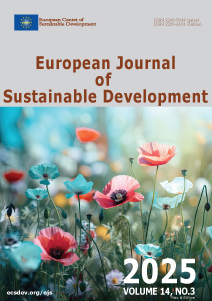Building Elements from Straw: Challenges of a Circular Business Model
Keywords:
bioeconomy, straw, circular business model, circular economyAbstract
The transition to a circular and bio-based economy is critical for achieving sustainable development in the construction sector. This study explores the viability of straw, a widely available agricultural residue, as a sustainable building material within a circular business model. Using the case of prefabricated straw panels in Denmark and Sweden, the research applies the Triple-Layered Business Model Canvas (TLBMC) to assess challenges for a successful business model within the economic, environmental, and social dimensions. A mixed-methods approach, including stakeholder workshops, document analysis, and expert interviews, reveals that straw-based construction offers significant benefits, such as carbon sequestration, reduced material use, and local value creation. However, challenges persist, including seasonal supply constraints, high transport costs, regulatory complexity, and limited public awareness. The findings underscore the need for supportive policy frameworks, certification pathways, and public procurement incentives to scale up straw-based construction. This paper contributes to the discourse on sustainable building practices by highlighting the potential of agricultural byproducts to foster circularity, reduce emissions, and enhance regional resilience.
Keywords: bioeconomy; straw; circular business model; circular economy.
Downloads
Published
How to Cite
Issue
Section
License

This work is licensed under a Creative Commons Attribution-NonCommercial 4.0 International License.





